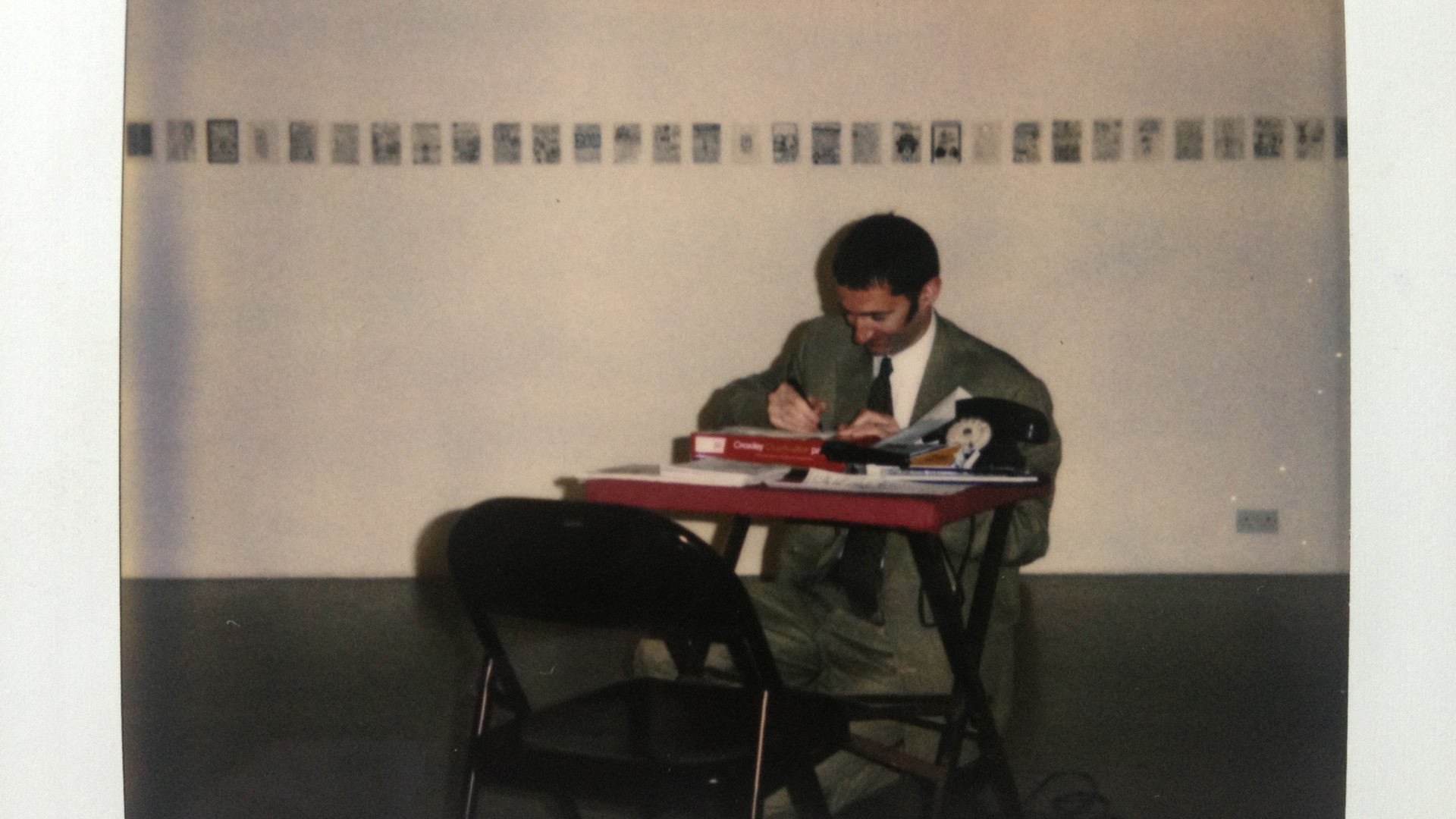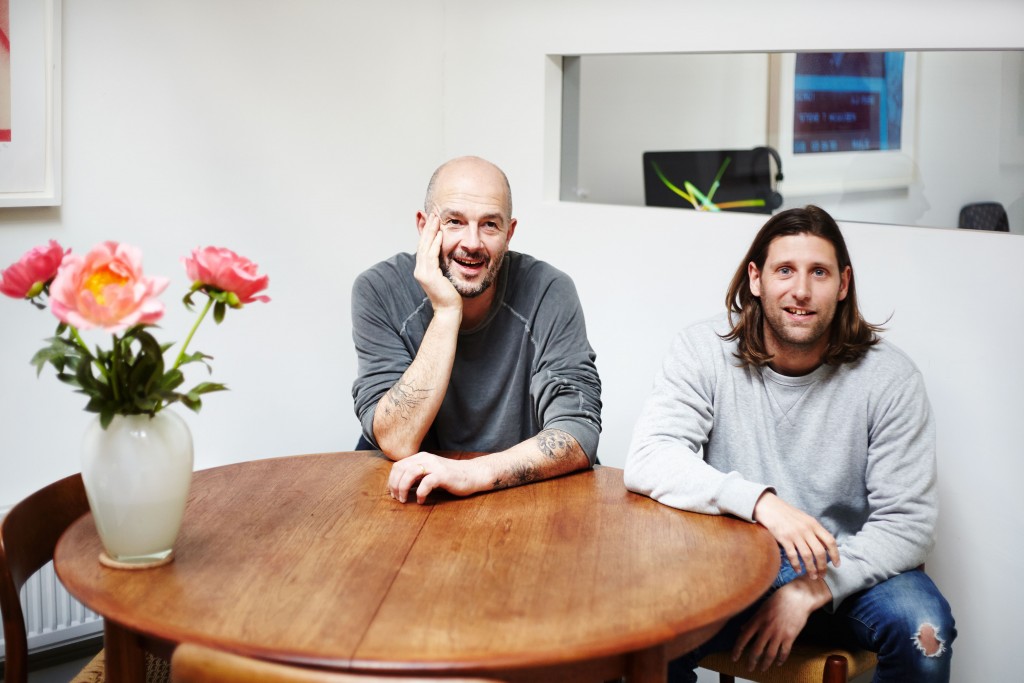Interview with Matthew Flowers of the Flowers Gallery
Art — 21.07.15
Words by George Upton

Flowers Gallery has been exhibiting emerging and undiscovered artists as part of a week long, artist-curated show since 1983. Artist of the Day gives crucial gallery space and the prestige of being selected by an established artist to those who deserve recognition. In an industry where success owes as much to chance as it does to talent, Artist of the Day goes some way to ensure artists that have been overlooked do not disappear into obscurity.
Now in its 22nd edition, Teeth Magazine spoke to the gallery’s director, Matthew Flowers, about the origins of this unique exhibition, highlights from its history and what to expect for this year.
What is ‘Artist of the Day’? How did it come about?
Artist of the Day is a platform for emerging and under-recognised artists. The idea came about during the early 80’s, at a time when there was a distinct lack of exhibiting opportunities for emerging artists. From a conversation between Angela Flowers, Gallery Director Robert Heller and the artist Angela Eames, the idea of a series of one-day exhibitions was formed, to allow opportunities for new artists to show their work and garner critical attention. Importantly, Angela herself did not select these but were chosen by established artists who would nominate a fellow artist that they thought would benefit from a one-day exhibition at the gallery. Their choice could be an emerging artist who had not yet shown or an older artist that they felt to have been neglected. The very first artist to be exhibited was Anthony Daley, selected by David Hepher.
What are the criteria for the artists selected?
The criteria for selection is talent, originality, promise and the ability to benefit from a one-day solo exhibition of their work at Flowers Gallery.
How has the show changed since it began? How has it helped artists develop and establish themselves?
We’re very pleased to say that we have not made many changes to the exhibition format since it began. In the past we awarded a prize to the critic who came the most often, which we no longer do (William Packer, then critic for the Financial Times, won it several years over) but most other things remain the same. Many of the artists who have taken part have gone on to have very successful careers which is a source of great pleasure for the gallery – for example several artists went on to be nominated for the Turner Prize, including Dexter Dalwood (selected by Jeffery Camp, 1985), Cathy de Monchaux (selected by Phillipa Beale, 1988) and Lynette Yiadom-Boakye, (selected by Martin Maloney, 2005), who is also currently exhibiting at the Serpentine Gallery. This year Adam Dant (selected by Cornelia Parker for the 1996 edition) was appointed as the Official Election Artist for the 2015 General Election, and Lisa Barnard (chosen by Simon Norfolk for the 2014 edition), has recently been nominated by Louise Clements for the 2015 Rencontres d’Arles Discovery Award. The gallery has also benefited by being introduced to artists who we now represent, such as George Blacklock, Nicola Hicks, John Kirby, Claerwen James, Lucy Jones, Tim Lewis and Renny Tait. We continue to look forward to new surprises each year.

Billy Childish selected by Tracey Emin. Photograph by Steve Ibbitson
Are there any artists that particularly stand out from across the years?
There have now been over 200 artists selected for Artist of the Day, and there have been too many unexpected delights to list comprehensively. However, examples that are hard to forget have included Sokari Douglas Camp’s kinetic sculpture with wonderful clapping rhythms; Nicola Hicks with 15 fellow RCA students & their open top truck helping with her plaster animals; Colin Hall staying in bed all day; Juneau Projects rocking the street with their performance; and Marcus Harvey choosing the whole of Turps Art School to exhibit.
It is not only new talent that has been recognised by the exhibition; one memorable show in 1987 featured a mini-retrospective of the artist and educator Morris Kestelman, who had up until that point been (quite unbelievably) neglected, while Peter Blake highlighted the lesser known paintings of the famous photographer Terence Donovan for his selection in 1991.
Over the years we have been very grateful to all of our supporters and exhibiting artists; selectors have included Tracey Emin, Albert Irvin, Gilbert & George, Anish Kapoor, Anthony Gormley, Maggi Hambling, Allen Jones, Bob & Roberta Smith, and Helen Chadwick, among very many others. One year we deviated slightly by inviting critics to make their choices (Including Waldemar Januszczak, Sarah Kent, William Packer and David Sylvester), but we stick to inviting artists to nominate.

Alana Francis selected by Chris Orr. Photograph by Lily Bertrand-Webb.
What is the benefit of the show being curated by professionally established artists? How does this differ from organising the show with a curator?
The exhibition has a terrific energy, which comes from this unusually dynamic curatorial process. The first step is to invite our selectors, who then go on to choose their artist. We share thoughts about the actual exhibition of each artist and work with our team of installers to hang and take down the exhibition. The selectors attend the show with the exhibiting artists each day and help to draw in a crowd of visitors and critics.
Could you talk a little bit about this year’s show? What are the highlights?
This year Jake and Dinos Chapman have selected Robert McNally a Berlin-based artist. He will be exhibiting a series of intensely detailed drawings on a super-black material designed for use in space optics. Jane Joseph has selected Sheila Vollmer, a sculptor who has exhibited widely but very little in commercial galleries. Tom Hunter has selected photographer Juno Calypso, for what he describes as her “original and disturbing” vision of femininity. This is presented as a series of self-portraits in which she portrays an invented alter-ego named Joyce. Chris Orr has selected Alana Francis, who explores personal themes in her work; in this latest series she explores her recent experience of having major facial reconstructive surgery. And finally, Richard Smith has selected his long-time studio assistant Martin Potts, the first time in the history of the exhibition that an artist is honoured who is no longer living. Martin moved out to work with Richard in New York after working with him in the UK in the 1960s; he made his own paintings using pallets and doors that he found on the street and later on plastic supports, which we are very pleased to be showing this year.

Jake Chapman and Robert McNally. Photograph by Lily Bertrand-Webb